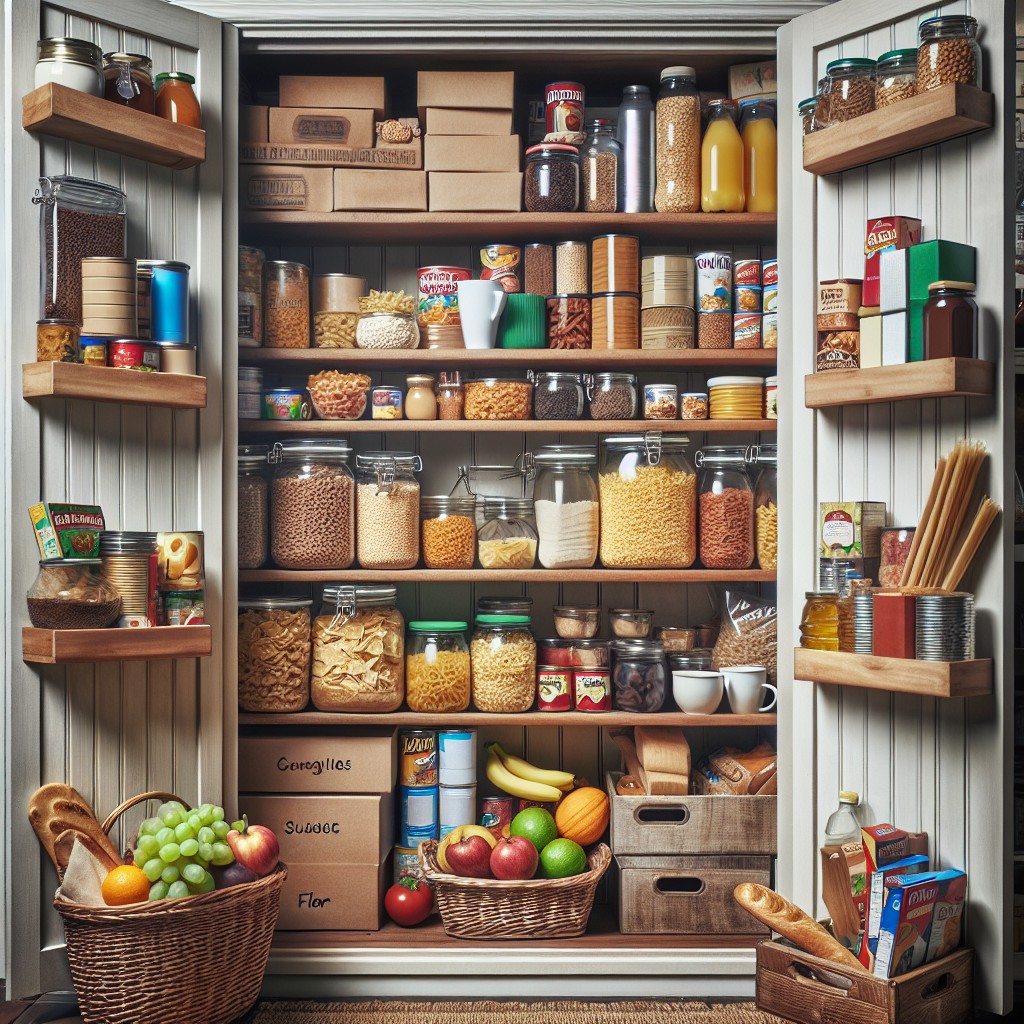Last updated on
Explore how to optimize your food storage and reduce waste as we delve into key insights surrounding pantry use statistics.
Pantry usage patterns have undergone significant changes over the years, influenced by factors such as shifting dietary habits, increased interest in home cooking, and the rise of pantry organization trends.
According to a recent survey by the National Association of Home Builders, 85% of new homes have a walk-in pantry.
Furthermore, a study by Houzz found that 31% of renovating homeowners upgraded their pantries in 2019, with the average spend on pantry projects amounting to $1,200.
This article delves deeper into these statistics, providing a comprehensive overview of pantry usage, the factors driving it, and the implications for home decor and organization.
Stay tuned for an insightful exploration of the world of pantries.
Over 7% of American households use pantries for storage
While pantries might seem like a thing of the past, they’re still utilized extensively in contemporary households. The U.S. Department of Agriculture’s Food Security report reveals that more than 7% of households across the country leverage these handy spaces for storage.
From canned goods to cooking essentials, pantries provide a dedicated area to keep food items stored properly, organized, and within arm’s reach. This widespread usage underscores the role they play in many kitchens, highlighting their functionality and practicality.

There are over 200 food banks in the US associated with 60,000 partner food pantries
Across the United States, a vast network supporting food sufficiency exists, comprised of both food banks and associated partner pantries. Over 200 food banks function as the main hubs, providing bulk supplies that later get distributed to the smaller units – approximately 60,000 partner food pantries.
These food pantries, strategically located in various neighborhoods, are essential in ensuring accessibility and provision of resources to individuals and families in need, showcasing the substantial outreach of the food bank system in the country.
53 million Americans food banks, food pantries, and meal programs to eat
In examining the use of food assistance facilities across the country, it’s starkly apparent that these resources are essential to a significant segment of the population. A staggering figure of over 53 million individuals—nearly 16% of the population—utilizes support services including food banks, pantries, and meal programs to meet their dietary needs.
These crucial resources provide a lifeline, fulfilling the basic human necessity of nourishment. Unemployment, underemployment, health issues, and transitional circumstances are among the factors that propel these individuals towards food assistance services.
Thus, these indispensable facilities serve as a pillar of support to a substantial percentage of the American populace.
80% of food banks report an increase or steady demand for emergency food services
Increased economic instability and food insecurity have led to a surge in demand for emergency food aid across the nation. Astonishingly, four out of every five food banks have reported either a steady demand or a noticeable uptick in utilization of their services.
This trend is not just confined to a specific region or demographic. It is a widespread issue that is affecting diverse communities, revealing a compelling need for accessible food resources in our society.
The Houston Food Bank is the largest food pantry in the US in size and distribution
Sprawling over a substantial 308,000 square feet, this colossal facility has rightfully earned its title. It serves an impressive network of approximately 1,600 community partners across 18 southeast Texas counties.
Its annual distribution capacity hits a staggering 122 million nutritious meals, surpassing any other food pantry across the country in terms of distribution volume. Not only is it known for its vast outreach but also for its focus on providing quality, maintaining a high nutritional value in the meals supplied.
This ensures the beneficiaries are not just fed but nourished, all performed with an impeccably organized and efficient distribution system.
Houston Food Bank serves a network of 1,600 community partners in 18 southeast Texas counties
The Houston Food Bank, recognized as the largest in the nation, extends its services far beyond its physical location. Expanding across 18 counties in southeast Texas, this organization has established a formidable network spanning 1,600 community partners. These affiliates consist of non-profit organizations, shelters, soup kitchens, and other food pantries.
Together, they collaborate to ensure that nutritious food reaches those people in need, reaffirming Houston Food Bank’s unwavering commitment to fighting hunger at a local level. Despite its large geographical scope, the organization maintains a seamless operation, thanks to clear communication, coordinated efforts, and shared resources, ultimately creating an impactful network across South Texas region.
1 in 7 Americans rely on food pantry
According to a study by Feeding America, approximately 15% of the nation’s population, or one in seven individuals, depends on food pantries for sustenance. These numbers highlight the significant role of food pantries in meeting essential nutritional needs, particularly amid socio-economic disparities.
These facilities serve as a safety net, providing a critical food source, especially to families living under the poverty line. The current economic climate further accentuates their importance, as more individuals find it challenging to afford basic provisions.
1 in 4 black people in America and 1 in 6 Latinos rely on food pantries
The reliance on food pantries spans across various racial and ethnic groups in the United States. For instance, the black community shows a need for these services with 25% utilizing them. Further emphasizing the role of these facilities in ensuring food security, the Latino population follows closely behind with 17% using food pantries. This highlights the critical role pantries play in supporting communities, especially ethnic minority populations facing higher levels of food insecurity. Addressing these disparities requires concerted efforts to ensure access to nutritious food for all.
85% of home buyers want extra large pantries
Overwhelmingly, potential homeowners place significant emphasis on pantry size during their home buying process. This trend is evident, with a whopping 85% expressing a preference for extra large pantries. Furthermore, this predilection isn’t limited to a particular demographic; it spans across different age groups, income levels, and geographical locations.
Even small-space dwellers are part of this trend, making clever use of high ceilings and slim spaces to create vertical pantries. There’s a shift towards a demand for greater storage capacity in the home, signifying the importance of organization and a well-stocked kitchen for contemporary homeowners. Moreover, this figure points to the utility aspect overriding aesthetics in the kitchen space.
This preference has led property developers and interior designers to rethink their kitchen design strategies, increasingly focusing on maximizing storage space without compromising on style. Thus, it has become more and more common to see homes on the market featuring spacious and well-designed pantries that cater to this demand.
Extra lager pantries are the number one must-haves for home buyers
Home buyers commonly rank kitchen features as top priorities, particularly when it comes to storage. One survey even found that a whopping 85% of respondents deemed an expansive pantry as a critical requirement when choosing a new home.
It would seem that no kitchen cupboard or cabinet set is complete without the roomy convenience of a large pantry. The preference for more spacious pantry space may be influenced by increasing interest in cooking and baking at home, necessitating a location to neatly store diverse ingredients.
Moreover, a generously sized pantry can aid in better organization, reducing clutter, and ultimately creating a more relaxed and efficient kitchen environment. Ultimately, not only do large pantries offer practical benefits, they can also potentially increase the value of a home, making them a winning feature in today’s real estate market.
References:
- https://www.ers.usda.gov/
- https://www.feedingamerica.org/
- https://www.chn.org/
- https://www.homesandgardens.com/
Recap:




